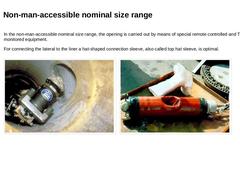
|

|
In the non-man-accessible nominal size range, the opening is carried out by means of special remote controlled and TV monitored equipment. For connecting the lateral to the liner a hat-shaped connection sleeve, also called top hat sleeve, is optimal. | |
(Image: Recreation of the branch connection [FI-Insit] - Opening the connection region of the lateral)
|
(Image: Recreation of the branch connection [FI-Insit] - Packer and top hat sleeve)
|
|
|

|

| During the connection using a top hat sleeve, a 5-45 cm long resin soaked hose is placed by means of special device in the connection opening and then glued, after opening the liner. The top hat sleeve is open at both ends and cylindrical in shape. It is made of glass fibre weave or felt material and is provided at the lower end with a flange several centimetres wide. If the liner is made of thermoplastic material (HD-PE, PP) then a special weldable … |
|

|

| (Image: Attention!)
The open cylindrical shaped hose, which is made of glass fibre weave or felt material, should protrude at least 150 mm beyond the first pipe joint of the lateral. | |
Cured-in-place connection closer pieces shall be classified according to the minimum distance extended into the lateral pipe [DINEN13566-4:2003]. | (Table: Classification of cured-in-place lateral connection collars [DINEN13566-4a]) |
|
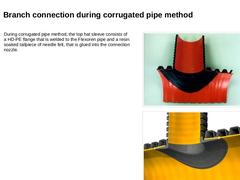
|

|
During corrugated pipe method, the top hat sleeve consists of a HD-PE flange that is welded to the Flexoren pipe and a resin soaked tailpiece of needle felt, that is glued into the connection nozzle. | |
(Image: Corrugated pipe method: Section through the branch connection region with simultaneous rehabilitation of the sewer and laterals [FI-Upono])
|
|
(Image: Corrugated pipe method: Section through the renewed branch connection region with simultaneous … |
|
|
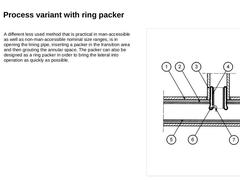
|

|
A different less used method that is practical in man-accessible as well as non-man-accessible nominal size ranges, is in opening the lining pipe, inserting a packer in the transition area and then grouting the annular space. The packer can also be designed as a ring packer in order to bring the lateral into operation as quickly as possible. | (Image: Sealing the annular space in the connecting region of a lateral with a ring or hollow packer [WRC83])
|
|
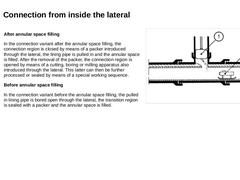
|

| (Image: Creating the branch connection using the trenchless method from the lateral towards the annular space grouting [Gale82] - Working step 2)
After annular space filling In the connection variant after the annular space filling, the connection region is closed by means of a packer introduced through the lateral, the lining pipe is pulled in and the annular space is filled. After the removal of the packer, the connection region is opened by means … |
|
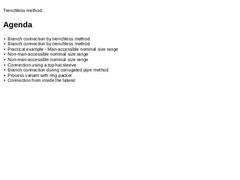
|

|
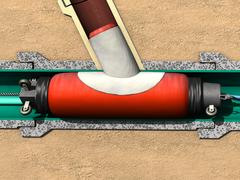
|

This module deals with the branch connection during lining with continuous pipe. |

|

The six-part series of lectures about the "lining with continuous pipes" provides an overview of the limiting conditions, applied material, method variants as well as the possibilities of the quality assurance when applying these renovation measures. Part 6 "Quality assurance" describes different damage events which can occure during renovation with lining with continuous pipes as well as adequate quality securing measurements to prevent such damage … |
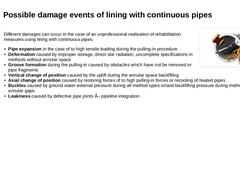
|

| (Image: Damages)
Different damages can occur in the case of an unprofessional realisation of rehabilitation measures using lining with continuous pipes: - Pipe expansion in the case of to high tensile loading during the pulling-in procedure
- Deformation caused by improper storage, direct slar radiation, uncomplete specifications in methods without annular space
- Groove formation during the pulling-in caused by obstacles which have not be removed or pipe …
|
|
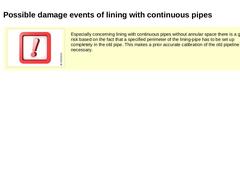
|

| (Image: Attention!)
Especially concerning lining with continuous pipes without annular space there is a great risk based on the fact that a specified perimeter of the lining-pipe has to be set up completely in the old pipe. This makes a prior accurate calibration of the old pipeline necessary. |
|

|

Groove formation | |
(Image: Groove formation on PVC lining pipe [Jürge05])
|
(Image: Groove formation on HD-PE lining pipes [Jürge05])
|
| |
According to DIN 8075 [DIN8075:1997], small flat longitudinal grooves are permissible as long as the wall thickness remains within the permissible deviation. |
|
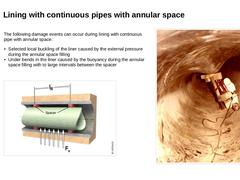
|

|
The following damage events can occur during lining with continuous pipe with annular space: - Selected local buckling of the liner caused by the external pressure during the annular space filling
- Under bends in the liner caused by the buoyancy during the annular space filling with to large intervals between the spacer
| (Image: Buckled HD-PE pipe [John98])
| | (Image: Loading of a pipe section between spacers with reference to [FI-Hoech] [Image: S&P GmbH])
|
|
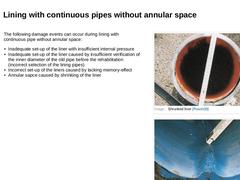
|

|
The following damage events can occur during lining with continuous pipe without annular space: - Inadequate set-up of the liner with insufficient internal pressure
- Inadequate set-up of the liner caused by insufficient verification of the inner diameter of the old pipe before the rehabilitation (incorrect selection of the lining pipes)
- Incorrect set-up of the liners caused by lacking memory-effect
- Annular sapce caused by shrinking of the liner
| |
|
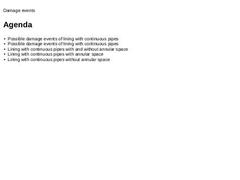
|

|
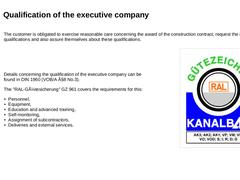
|

|
The customer is obligated to exercise reasonable care concerning the award of the construction contract, request the required qualifications and also assure themselves about these qualifications. | |
Details concerning the qualification of the executive company can be found in DIN 1960 (VOB/A §8 No.3). The "RAL-Gütesicherung" GZ 961 covers the requirements for this: - Personnel,
- Equipment,
- Education and advanced training,
- Self-monitoring,
- Assignment …
|
|
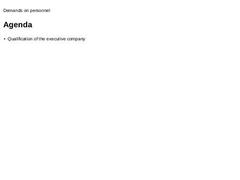
|

|
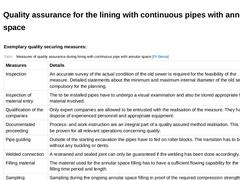
|

Exemplary quality securing measures: (Table: Measures of quality assurance during lining with continuous pipe with annular space [FI-Steina]) |
|
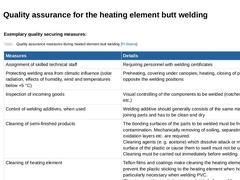
|

Exemplary quality securing measures: (Table: Quality assurance measures during heated element butt welding) |
|
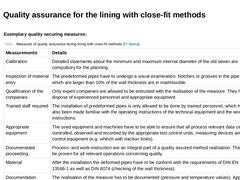
|

Exemplary quality securing measures: (Table: Measures of quality assurance during lining with close-fit methods [FI-Steina]) |
|

|

|
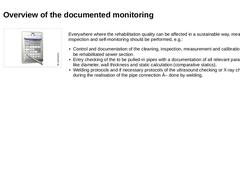
|

| (Image: Documentation)
|
Everywhere where the rehabilitation quality can be affected in a sustainable way, measures for inspection and self-monitoring should be performed, e.g.: - Control and documentation of the cleaning, inspection, measurement and calibration of the to be rehabilitated sewer section.
- Entry checking of the to be pulled-in pipes with a documentation of all relevant parameters, like diameter, wall thickness and static calculation (comparative …
|
|
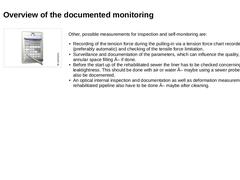
|

| (Image: Documentation)
|
Other, possible measurements for inspection and self-monitoring are: - Recording of the tension force during the pulling-in via a tension force chart recorder (preferably automatic) and checking of the tensile force limitation.
- Surveillance and documentation of the parameters, which can influence the quality, during the annular space filling – if done.
- Before the start up of the rehabilitated sewer the liner has to be checked …
|
|

|

|

|

This module deals with the quality assurance of lining with continuous pipes with and without annular space. |